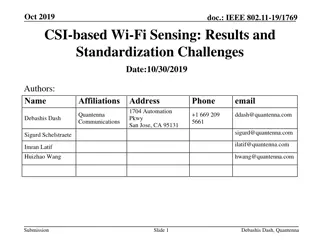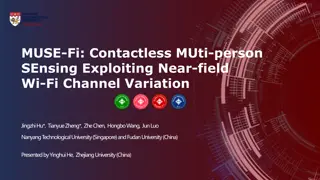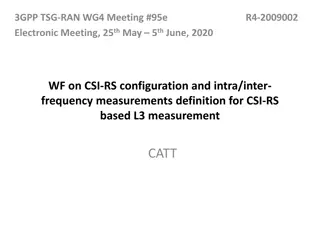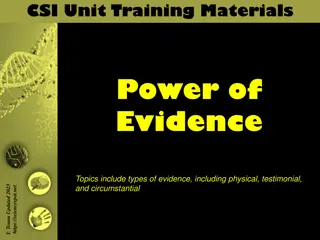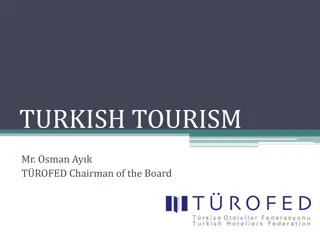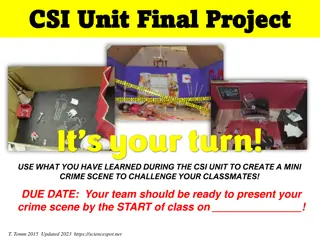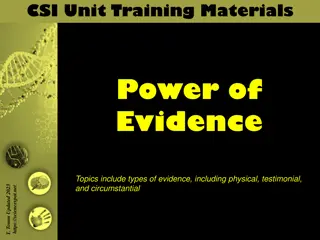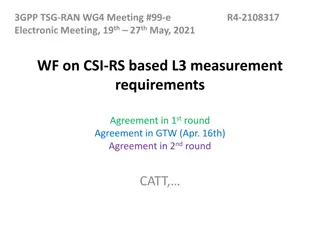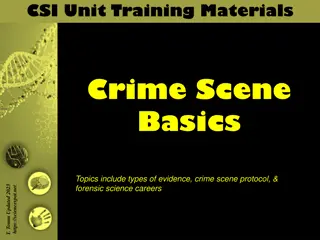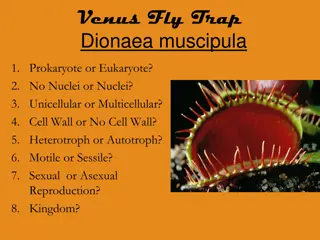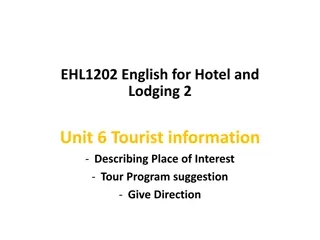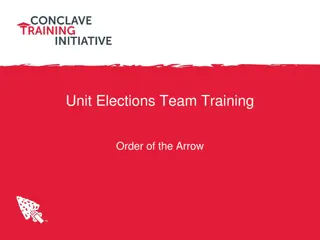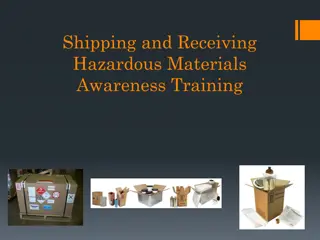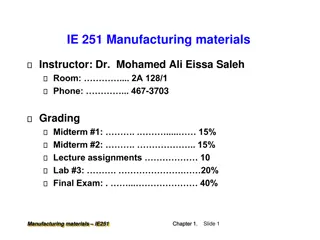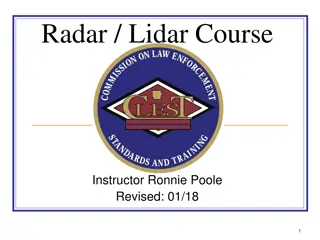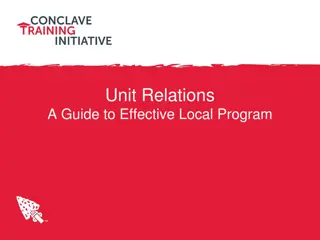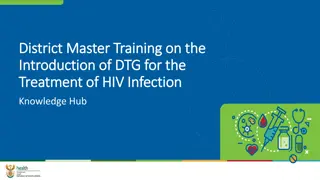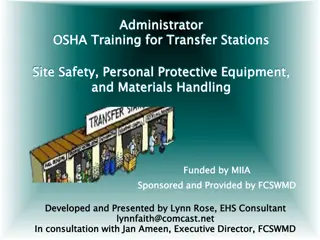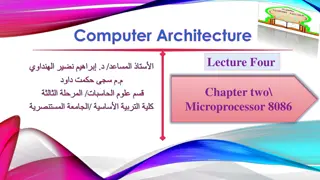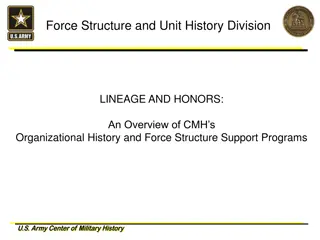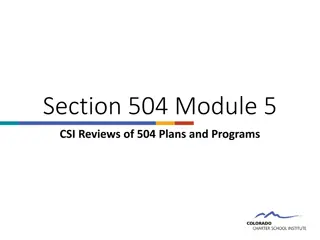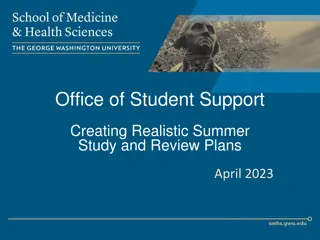CSI Unit Training Materials Case Study: Tourist Trap
In this CSI training case study, learn about the "Tourist Trap" crime pattern involving criminals targeting tourists driving rental cars. The study covers tactics used to identify victims, evidence collection techniques like documenting bite marks, suspect identification processes, forensic odontology procedures, and how the case was resolved. Discover how improved surveillance and removal of rental car identifiers helped reduce such crimes.
Download Presentation

Please find below an Image/Link to download the presentation.
The content on the website is provided AS IS for your information and personal use only. It may not be sold, licensed, or shared on other websites without obtaining consent from the author. Download presentation by click this link. If you encounter any issues during the download, it is possible that the publisher has removed the file from their server.
E N D
Presentation Transcript
CSI Unit Training Materials Case Study: Case Study: Tourist Trap Tourist Trap Complete the slide as we watch the video. T. Tomm Updated 2023 https://sciencespot.net https://www.youtube.com/watch?v=OpN-LSIoeYg T. Tomm 2007 Updated 2023 https://sciencespot.net/
Fill in the slide as you watch the video. A red square with a white letter on it Description automatically generated with low confidence We will stop several times to review the evidence. First Break @ 6:00 Stop the video to review the next slide.
1. What does smash and grab and bump and rob mean? Criminals use another car to cause an accident (SMASH or BUMP) and then steal from the victims (GRAB or ROB). 2. Why were tourists targeted? Easy to identify driving rental cars, looking at maps, etc. Usually have cash and other valuables that are easy to sell. Case Study: Tourist Trap 3. What happened to the reporter and her mother? What did the attacker do to try to stop her from leaving? They were assaulted on their way to the airport. He bit her arm through the muscle. 4. How did criminals identify a rental car? 1 Bumper stickers rental company. 2 License plates started with a y or a z . 5. How do investigators document a bite mark? 1 PHOTOGRAPH the bite mark using different lighting effects regular, infrared, ultraviolet. 2 They use an L-shaped RULER to document the MEASUREMENTS of the bite mark. http://abfo.org/home/bitemark4/ Next Break @ 10:44 Stop the video to review the next slide.
https://www.texasobserver.org/lining-up-a- conviction/ 6. How was the main suspect identified? The victim picked him out of a photo array. 7. How did the police get the suspect into custody? He attacked another man (in a rental car.) (Son was a cop and he also bit the man.) Case Study: Tourist Trap 8. What does a forensic odontologist do? Studies DENTAL PROFILES to help identify suspects or victims. 9. How do investigators use the casts or models made from a suspect s teeth? 1 WAX IMPRESSIONS (compare to bite marks) 2 - PLASTIC OVERLAYS (compare to photos) Watch the rest of the video to complete your slide.
10. What was his alibi? Did his alibi hold up in court? The suspect said he was at work. No - Why not? 11. What were the findings of the jury? Guilty Case Study: Tourist Trap 12. What two things helped reduce this type of crime? 1 Increased surveillance of the area. 2 Rental cars removed identifiers - bumper stickers and changed license plates


